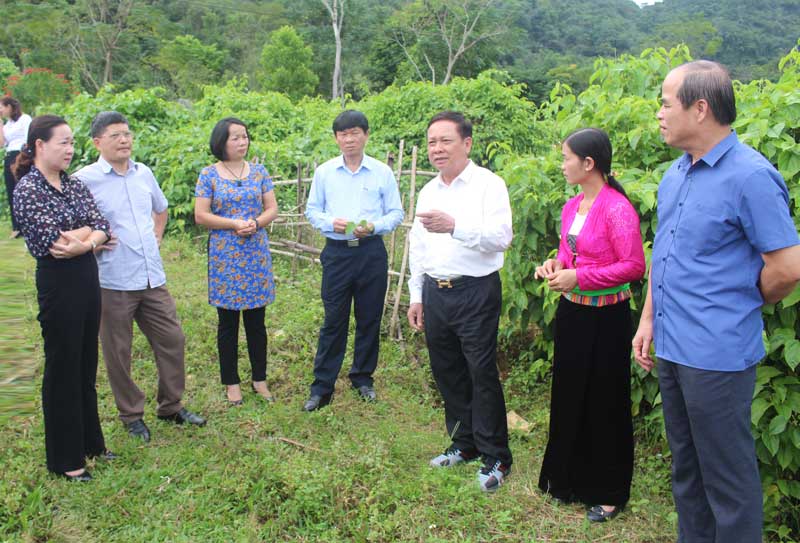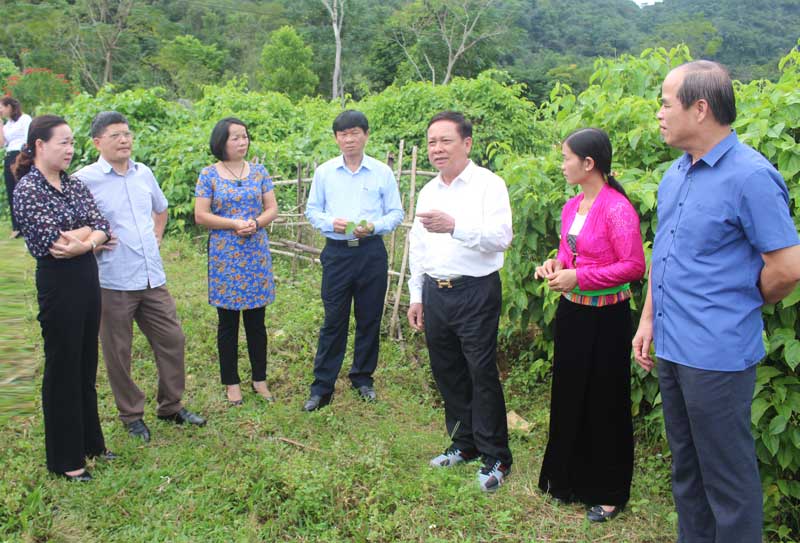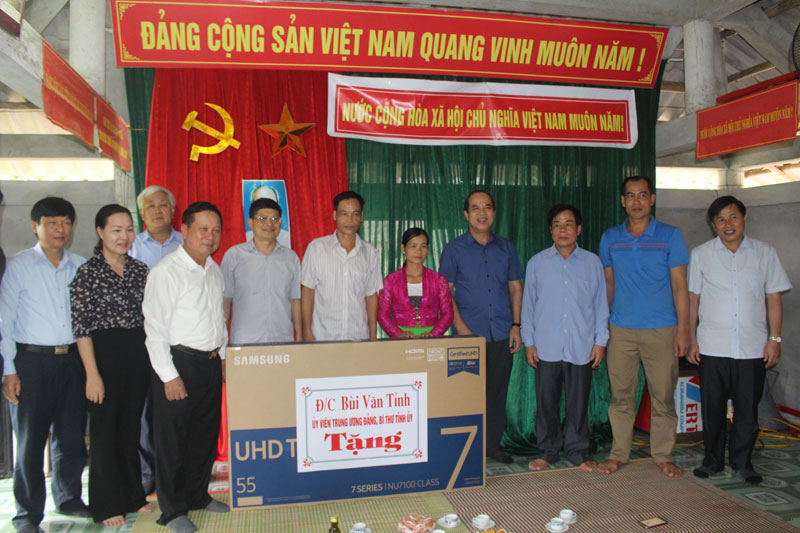
(HBO) – Bui Van Tinh, Party Central Committee member and Secretary of the Party Committee of Hoa Binh province, made a field trip to sachi farms in Khang and Bua Lay hamlets, Dich Giao commune, Tan Lac district on November 14.
All parts of sachi (scientifically known as Plukenetia volubilis), including nuts, trunk, leaves and roots, can
be used to make food, cosmetics and pharmaceutical products. In April 2017,
with the support of INCA Vietnam JSC, households in Bua Lay hamlet, Dich Giao
commune, planted sachi trees on 1.2 hectares of land on a pilot basis. One year
later, they harvested nearly 1.3 tonnes of dried sachi nuts per ha, earning
some 80 million VND.
Each ha of sachi produces from 1-1.3 tonnes of dried nuts in the
first crop, and over 3 tonnes from the third crop. Annual profit is estimated
at an average 150-200 million Vietnam dong. Sachi’s advantage lies in the long
duration of nut harvesting which lasts for between 12 and 15 years. Sachi is
ready for harvest eight months after it is planted. The tree suits different
types of soil.
INCA Vietnam has supplied sachi saplings to local farmers and sent
technicians to guide them in how to cultivate and harvest sachi. Of note, the
company buys all products for farmers. The trial cultivation in Tam Lac
district has showed that sachi suits the local climate and soil.
Bui Van Tinh, Party Central
Committee member and Secretary of the provincial Party Committee, visits a
sachi farm of INCA Vietnam in Khang hamlet, Dich Giao commune, Tan Lac
district.

Bui Van Tinh, Secretary of the
provincial Party Committee, visits and presents gifts to people in Khang hamlet,
Dich Giao commune, Tan Lac district.

INCA Vietnam aims to form a concentrated material zone of 500 ha
of sachi in Tan Lac district, along with building a factory to ensure
on-the-sport processing.
Tan Lac district will work to ensure the formation of the area
when INCA Vietnam makes legal commitments to buy all products for local
farmers.
On this occasion, Tinh presented a set of television to the
cultural house of Khang hamlet./.
The Standing Board of the Hoa Binh provincial Party Committee has agreed in principle on a proposal by the Standing Board of the Party Committee of Hoa Binh city to gather feedback on the city’s 1:2000 zoning plan, which forms part of its broader urban development strategy.
Hoa Binh province has made notable progress in public administration reform and digital government development, with the satisfaction index among citizens and businesses reaching over 84%, according to recent government evaluations.
Thanks to great efforts by local authorities in recent times, the governance and public administration performance of Mai Chau district has been significantly improved.
In the afternoon of June 6, the Party Committee, the People's Council, the People's Committee and the Fatherland Front of Lac Son district solemnly held a meeting to celebrate the 139th anniversary of the district's founding (1886–2025) and the 79th anniversary of the establishment of the district's Party Committee (1946–2025). There was the attendance of Mr. Bui Van Thang, the Vice Chairman of the Provincial People's Council; Mr. Quach Tat Liem, the Vice Chairman of the Provincial People's Committee; Ms. Dang Bich Ngoc, the Deputy Head of the National Assembly Delegation of the province; as well as the former leaders of the province and district through various periods, who are the natives of the district.
Implementing the Politburo’s Resolution No. 57-NQ/TW on breakthroughs in science – technology, innovation, and digital transformation is a golden opportunity for the northern mountainous province of Hoa Binh to renew growth model, improve competitive edge and shorten digital gap.
Resolution 57-NQ/TW, issued by the Politburo on December 22, 2024, identifies sci-tech, innovation, and digital transformation as strategic breakthroughs to build a developed and prosperous nation. In Hoa Binh province, this spirit is not just a slogan, it’s being put into action through concrete initiatives that form a "new development triangle”: digital citizenship, digital economy, and digital administration.




